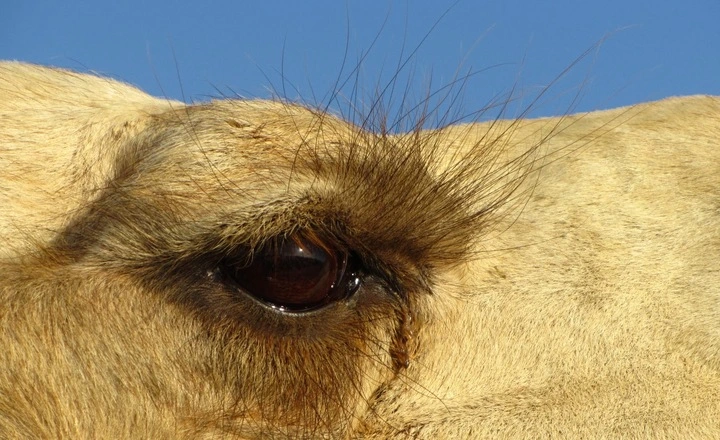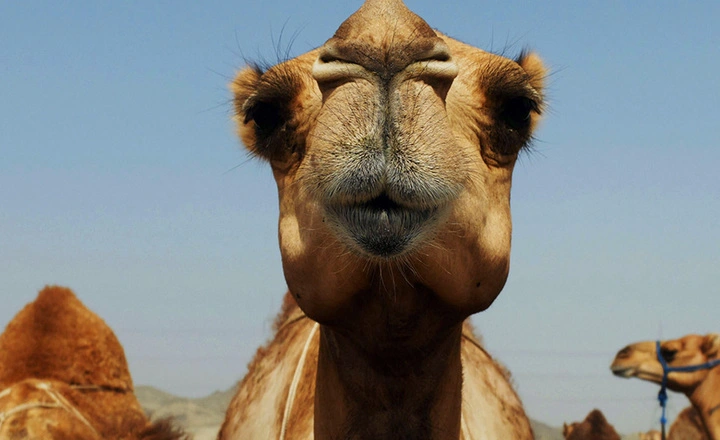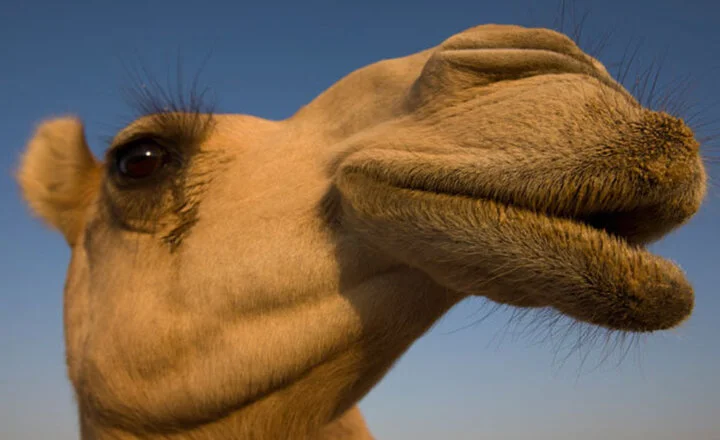Do Camels Have Three Eyelids? Yes, camels do have three eyelids, and each serves a specific purpose to help them thrive in their harsh desert environments. Here’s a detailed look at the function and importance of these eyelids.
This fascinating fact has long intrigued scientists and animal enthusiasts, sparking debates and curiosity about these remarkable desert dwellers. As you approach this enigmatic creature, something catches your eye – not just one or two, but three distinct eyelids blinking back at you.
Do Camels Have Three Eyelids?
Yes, camels do indeed have three eyelids. These extra eyelids serve as a protective barrier against the harsh desert environment in which camels reside.
During windy days or sandstorms, the third eyelid acts like a windshield wiper, closing to prevent sand from getting into the camel’s eyes without obstructing its vision.
The unique side-to-side motion of the third eyelid allows camels to navigate effectively through sandy terrain while shielding their eyes from dust and debris.
The bushy eyebrows of camels further contribute to eye protection by offering additional coverage from the sun and dust. This adaptation is just one of many features that help animals survive in their natural habitats.
While camels may not be the only animals with three eyelids, this particular trait showcases how evolution has equipped them with specialized tools to thrive in challenging environments like the desert.
What Is the Third Eyelid For?
The third eyelid, also known as the nictitating membrane, is an additional layer of protection for certain animals like camels. This thin and transparent membrane helps shield the eyes from dust and sand particles, common in harsh desert environments where camels reside.
The third eyelid maintains moisture in the eyes and ensures clear vision even in challenging conditions such as sandstorms.
For camels that are constantly on the move, transporting heavy weight goods or traversing long distances across deserts, having this extra protective layer is crucial for their eye health and overall well-being.
The evolution of multiple sets of eyelids in certain animals demonstrates nature’s adaptation to specific environmental challenges, allowing these creatures to thrive in their natural habitats despite their harsh conditions.
Why Do Camels Have Three Eyelids?
They have three eyelids, which is crucial in protecting their eyes from the harsh desert environment. This unique feature allows camels to travel across the desert even on windy days, preventing eye injuries and maintaining clear eyesight in challenging conditions.

The nictating membrane of camels is specially designed to trap sand and debris, keeping their eyes safe from potential harm.
This thin membrane functions like a screen that filters out particles, allowing camels to navigate through sandstorms and dusty environments more easily.
What Is Each Eyelid Used For?
While the primary function of the regular upper and lower eyelids is to blink and provide moisture and protection, the third eyelid acts as an additional shield against elements like sand, wind, and dirt.
This thin membrane can be drawn across the eye sideways to provide a clear field of vision while still offering protection.
In situations like sandstorms or windy days in the desert, camels rely on their third eyelid to keep their eyes safe without hindering their ability to see and move effectively.
The third eyelid is not just for show but plays a vital role in ensuring the well-being of animals in challenging environments. Its design reflects nature’s adaptation to provide optimal protection and functionality for creatures living in diverse habitats.
Which Animals Have Three Eyelids?
Many animals have a third eyelid that serves various functions to protect their eyes and enhance their vision.
Dogs, cats, and polar bears are among the animals that possess this unique feature. The nictitating membrane helps keep their eyes moist and clean, especially when they are in dusty or watery environments.

Marine animals like seals, manatees, and sea lions also have three eyelids. This extra protective layer allows them to see clearly underwater while swimming and diving for food.
Even some birds like woodpeckers, benefit from having a nictitating membrane to shield their eyes from debris while pecking at trees.
How Long Are Camel’s Eyelashes?
Camels have two sets of long eyelashes that serve the important function of keeping sand and debris out of their eyes.
The upper set of eyelashes can be around 2-3 inches long, while the lower set is slightly shorter. These long eyelashes act as a natural barrier against the harsh desert environment, helping to protect the camel’s eyes from irritation and damage.
They also have bushy eyebrows that provide additional protection from sand and sunlight. These thick eyebrows help to shield the camel’s eyes from glare and prevent particles from getting into their eyes.
Can Camels See with Closed Eyes?
They have a unique adaptation that allows them to see with their third eyelid partially closed. This adaptation enables camels to maintain visual awareness even in challenging environments where traditional eyelids may not provide enough protection.
The nictitating membrane also helps keep the camel’s eyes moist and clean, reducing the risk of irritation or damage from sand particles.

While camels may not have the same type of vision as humans when their third eyelid is closed, they can still navigate their surroundings effectively and ensure their eyes remain protected in the harsh desert environment.
Conclusion
The presence of three eyelids in camels serves a unique and essential purpose: protecting their eyes from harsh desert environments. Understanding this adaptation sheds light on the remarkable ways in which animals have evolved to thrive in their habitats.
While camels may not be the only species with this feature, exploring how it benefits them in their daily lives is certainly intriguing.
Further research into camel anatomy and behavior can provide valuable insights into the evolutionary adaptations of these fascinating creatures.
FAQs
Why do camels have three lips?
Camels do not have three lips. They have a split upper lip that helps them eat thorny desert plants without injury.
What is a female camel called?
A female camel is called a cow or a she-camel. Just like in many other animal species, the term cow refers to a female member of the species.
Do camels have 3 stomachs?
They do not have three stomachs. They have a single stomach with three compartments, known as the rumen, reticulum, and omasum.
